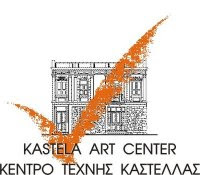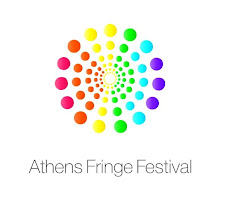

Long before the days of television, radio or even cinema there existed a different form of entertainment in Greece derived from folkloric traditions. Known as shadow theatre, or "Karagiozis" in Greek, it included paper-made puppets which were handled by one puppeteer who stood behind a white screen (a piece of cloth or a sheet were also used) that was illuminated by some source of light.
Shadow theatre was developed in many lands, including China, India, Persia, Indochina and Asia Minor. It was often associated with the worship of the dead as well as with deities of the 'other world.'
Greece is among the very few European countries that adopted shadow theatre, abandoning, however, its religious aspect and adding the provincial Greek culture's own uniqueness to it. Thus, shadow theatre slowly developed into an art form of its own kind, acquiring a Greek interpretation which also included music, acting and social satire incorporated with traditional folklore....






From karagkiozis.com
ReplyDeleteTHE SHADOW'S LIGHT
This is a going back to the UNIVERSAL HISTORY of the Shadows’ Theatre.
- How many times didn’t we play with our shadow, which some times grows up, sometimes becomes smaller! How many times didn’t we hunt it, didn’t we run to surpass it, didn’t we stop walking, in order not to step on it! How many times didn’t we hide ourselves from the light, in order it stops following us!.....
- What gives birth to our shadow? THE LIGHT. When there is light, there is shadow too. Light is the source of the creation, of our existence. First, there was the sun.After this, there was the fire. Today, in the play with the shadow, the electric lamps can help as well. So much old is the existence of the shadow. It is as old as the birth of the sun.
- The shadow always depends on the light and on the presence of a 3D existence, which may be animate or not. Many religions had given religious meaning to the shadow. The shadows kingdom is nothing else but a synonym to the kingdom of the deads, while some people call the deads «shadows of the past», and they refer to the shadows of the deads, which wander especially in the night, inside or outside of ruined houses.
- The falling of the shadow and the change of its dimensions, according to the position of the sun, hides a magic, not quiet clear meaning. In some countries of Africa, the noon is the most demoniac time, because the sun is almost vertical, disappearing perfectly the shadows.
- That’s why, the Theatre of Shadows has so old roots, that they are lost in the depth of the centuries, and the sources of its creation are as much dark, as the shadow.
- Several theories put its origin in India, Iava or China. But, all the information indicate that it has come from Asia. The oldest proves about this are included in the epic poems of MAHABARATA and TERIGATA. But also, the subjects of the plays of Shadows’ Theatre of Iava, Ceylon and Tayland come from MAHABARATA and RAMAGIANA.
- The Theatre of Shadows in India was developed in about 200 before Christ. In China, it appeared in about 200 after Christ, by a magician, who -in order to comfort the King Vu-Ti, who had lost his wife- represented her shadow behind a screen.
- The Chinese Theatre of Shadows has reached to a marvelous degree of perfection and unrivaled sensitive quality, because it embodies different Arts, like: painting, engraving, music, miming, putting them together to a new expression.
- No other country has figures so beautiful in elegance and delicate work, as China. Being worked with sharp knives on leather of donkey, these figures combine skill and imagination. They are about 33 centimeters high and they are composed of 11 parts: the head, the upper and lower part of the body, two arms, two branches, two palms and two feet.
- The screen is made of a blackberry paper or of a clean white gauze, it is stretched on a bamboo framework and its length is 8 metres. It is situated one and a half metres over the ground and it is decorated with silk stuffs in both sides.
- In the performance five persons take part: the player, the assistant and three musicians, who use several organs. In older times, the figures were presented motionless on the screen. They had nails and beak, as the souls of the deads they were representing. The performance had a religious character. The players were priests, the DALAG, as they were called. Their plays and figures, coming from their religious adoration, were divinities or Dragons.
- Later on, the show stopped being an exclusively religious art, and the figures obtained a human form and motion. The performances could last up to 4 hours.
- The Shadows’ Theatre of China, Bali and Iava may be the most famous in the world, but, except this, other countries of Far East, like Tayland and Kambotzi, have also developed this Popular Art with interesting variations.
- Travelling from Far East to Western, the Shadows’ Theatre has its first natural station in Iran. There, the plays of Shadows’ Theatre are known until the beginning of 20th Century. Among all the Arabic countries of Middle East and North Africa, just only Egypt gives us the first proves about Shadows’ Theatre, although sometimes its signs make their appearance in the big Arabic civil centers, like Vagdad and Damaskus.
- But, as we can be informed by several sources, the Theatre of Shadows was the lovely entertainment of the citizens of Algeria too, where someone named KARAGOUS was appearing as a great patriot and revolutionist, who used to beat, in an insulting way, the French colonists there. Except of Algeria, Tinisia and Morocco have their own Theatre of Shadows. Among all these countries, Egypt is the only one that has got the first written texts, which were played in Shadows’ Theatre performances, in the beginning of 20th Century.
- There is a great disagreement among the investigators of the Art of Shadows’ Theatre, in relation to the way this art traveled to the West, arrived in Mediterranean and ,finally, it terminated in TURKEY and GREECE. The most probable case is that, the Shadows’ Theatre has travelled together with Gypsies from India.
- In relation to how the Religious Theatre of Shadows succeeded to be changed and become comic, one of the many charming legends says that, Hatziavat is a contractor in Bursa and he is building Pasha’s Palace. Karagioz works there as a chief workman - carpenter and he amuses the workers, telling them a lot of stories. So, they listen to Karagioz’s stories with great admiration and the building of the palace cannot be finished.
- When Pasha discovers the reason of the delay, he orders his officers to kill Karagioz. After that, however, Pasha had remorses because of his crime, and he fell into deep melancholy. Hatziavat, who had listened a lot of Karagioz’s stories, cuts down a cardboard, gives it Karagioz’s shape and, miming Karagioz’s voice, he presents on a white screen the funny stories of Karagioz.
- So, this legend, as many others, indicates the confusion that exists, as for the entrance of this Show in Turkey or otherwise in Turkish ruled Greece.
- In Greece, the Theatre of Shadows appears in 1841 in Nafplion, where, in some newspaper of that time, there is a reference about Karagiozis. John Vrahalis was the first Karagiozis’s player in Greece. Immediately, Karagiozis becomes accepted and very beloved in independed Greece and wherever a performance takes place, a lot of people come to watch it.
- In 1890 in Patra, Dimitrios Sardounis (otherwise called Mimaros) will succeed -with great skill- to absolve Karagioz from all the foreign elements. This great master and mime ,Mimaros, managed to absolve Karagiozis from all the shameful words, indecent phrases and movements and step by step he succeeded to give him the form we see today.
- Through the years, Karagiozis is becoming a satirical Theatre. Using persons of the old authority, like Pasha, Pasha’s daughter, Vizier , Derven-Aga, who didn’t exist in the Turkish Theatre of Shadows, he satirizes the new authority. From place to place and according to the needs of each town, new characters are added, and the strongest of them continue to exist up to now.
- In Athens, Karagiozis makes his first appearance in 1852 in a neighborhood of Plaka. As in Turkish Karagioz, so in Greek Karagioz too, the feminine persons are very few, because the player - who mimes all the voices- is a man. The same thing used to happen in the Ancient Greek Theatre, where the actors were men, who used to play the part of feminine roles too. There is a great similarity between Karagioz and the characters of the Ancient Aristophanes’s Comedy. Karagioz looks like the descendant of the slaves of Aristophanes’s comedies. Besides this, on account of the steady characters, there is a great relationship between Karagioz and Comedia De l’ Arte. The hero of Comedia, called PULTSINELA, looks like he is the first cousin of Karagioz.
- Recapitulating our travel to the history of Shadows’ Theatre, which may be small as for its extent, but it is large as for its duration through the centuries and as for the distance between the continents, we have to remember once more:
· The roots of Shadows’ Theatre are dark and deep.
· There is a conflict among the investigators as for the origin of the Greek Theatre of Shadows.
- Now, we’ll present to you some elements about the Greek Karagiozis’s players: Karagiozis’s player is a great creator. He makes himself his own figures, using leather of a big animal, he paints and engraves them. He makes himself his own scenery. He plays the part of all the voices and the plays, which are presented by him each time, are not written in a text, but they have been written in each player’s mind, since the time he was an assistant. That is, from mouth to mouth, from the player to his assistant, the subjects of the Greek Shadows’ Theatre have been spread and preserved up to our days. This means that the Greek Shadows’ Theatre belongs to the Traditional - Popular Speech and it is a Traditional - Popular Art, like the Folk Song. The Greek Karagiozis’s player has the responsibility of the play’s direction and music and he prepares -with his own skill and imagination- the required effects. Besides, the Greek Karagiozis’s player constructs by himself his own stage, giving it his own architectural form. All the above elements indicate that Karagiozis’s player must be an excellent talent.
- The most fertile period, where the Greek Shadows’ Theatre flourishes is the period from 1915 up to 1950. In this period, the most of the plays, which are presented up to our days, were created and the greatest players were born. Each neighborhood had its own theatre, where every night a lot of people, of any age, was crowded together to watch the performance. The dynamic course of the show was stopped violently by the technology and the development of Seventh Art, of Movie and later on of Television.
- Today, in Greece, the Shadows’ Theatre is in accession again, although without the classic summer theatres with the ivy and the jasmine, a place from where the greatest players set out.
- Today, the Greek Karagiozis’s players struggle for the creation of the National Stage of Shadows’ Theatre. This stage will help and contribute in preservation and development of such a great and important art:
The Art of the Greek - Popular Theatre of Shadows.